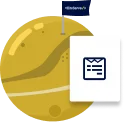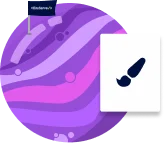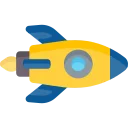
Tato webová stránka používá cookies
Pro lepší zážitek při procházení našich webových stránek používáme cookies. Kliknutím na Povolit vše souhlasíte s jejich používáním. Další informace najdete pod tlačítkem Upravit.

Non-binding offer

The first step of development is to get to know the demand and create a non-binding offer. This is a rough estimate of the project price based on the initial information supplied by the client in the inquiry.
In order to create a basic estimate of time and cost, we need at least a rough description of the project and the expected goals.



Analysis

Before the actual development, it is first necessary to familiarize yourself with the project. In most cases, the client does not know the development process of a web application or system and we do not know the core of their business and the problem they want to solve with the application. Therefore, to fill this gap, we have to conduct an analysis that consists of several meetings. It is usually accomplished in the form of a few face-to-face meetings and another 5 to 7 via video calls, depending on the nature and size of the project.
The goal of this analysis is to:
How is the analysis carried out:
Important information:



Design

The last step before the actual development is the design of the application. Here the client can choose from two options. The first option is the creation of a graphic design by our graphic designer. Although this option is more expensive, it offers the client a wide range of options for how their app will look and how the UX and UI will be built. This option is popular for applications where the target audience is the B2C sector.
The second option is graphics from a pre-prepared graphic template. This fulfills everything you expect from a modern web application. At the same time, it will speed up development and thus reduce the cost of creation. This is especially suitable for the B2B sector, where it does not put so much emphasis on the visual aspect of the project.



Development

We advocate agile development, so during this phase, we communicate regularly with the client, either through the Trello app or on regular status calls via Google Meet. This makes development much faster and, above all, more resilient to any risks that could slow down the project.
We always develop against a tattoo server, so the client can track changes that have been made to the app and give feedback on them.
We then send detailed reports from the application to Clockify at regular intervals. This allows the client to see exactly how much time was spent on what task.



Project completion

Our cooperation does not have to end with the project's completion. We like to work on projects for a long time and are dedicated to their development. At the same time, we will take care of your web application as part of the maintenance to ensure that it does not become outdated and security problems do not occur.
Answers to questions that might be troubling you before you start working together.
Yes. After development, we take care of your project so it doesn't get old and gets the care it needs. The forms of maintenance we provide can be found here (only in Czech).
One way to get an answer is to contact us with your request. We will get the information we need from you to price the project and you will get the answer you want. The other option is to send us an inquiry, based on which we will prepare a quotation.
Documentation is always better, but we just need the idea and your intention. Together we can then create the documentation. Importantly, this takes quite a lot of time because we need to be clear about what we want to create together to avoid problems during development. Think of it as every 1 hour that is spent on initial analysis and specification equals 1 MD of development that is dragged out due to misunderstandings, dead ends in the specification, etc. That's why it's a good idea not to underestimate the underpinning of the project right at the beginning. Above all, it saves you money.
Yes, we can take over or continue development from another company. However, an initial analysis is important to find out what technologies the project is written in and its overall state. Based on this information, we are able to define the process of taking over the entire project.
Yes, we create the new system independently of the old solution and deploy all changes to a test server with its own URL. After deploying the new system, however, it is recommended not to work in the old system anymore, otherwise, you will have two different databases (old and new system). Moreover, if you want to use the domain on which the old system was running, you would have to transfer the old system to another domain, which is not worth it just because of the unnecessary payment for the second hosting.
Yes, with data migration we can get everything from your old system to the new one. But the moment the data migration is done, you need to start using the new application.
Similarly to price, this is also a very individual thing depending on the scope of the project. However, it takes at least 3 to 4 weeks to analyze the solution, which will result in a complete assignment. During this process, it is important to note that every hour spent on the analysis and assignment saves 1 MD for the development team. It makes a big difference if we find a dead end during analysis or during development.
If you are interested in cooperation, please contact us here